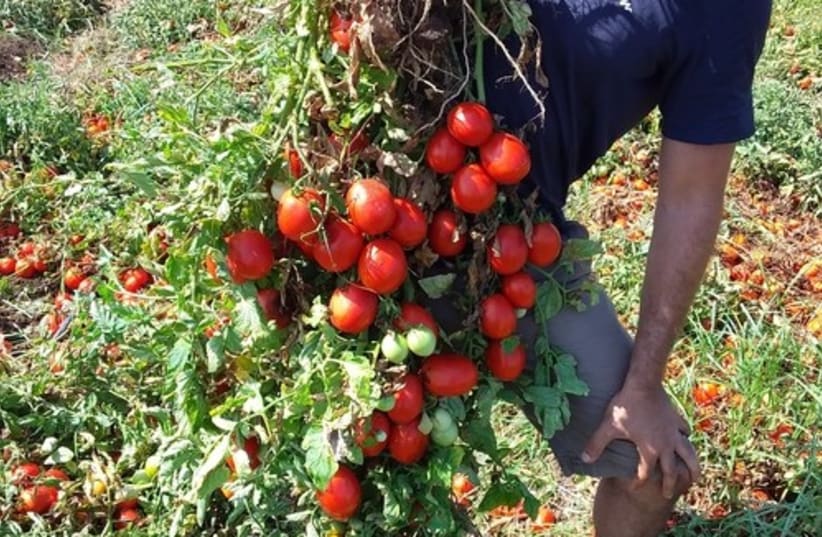More than half of Israelis say they like their tomatoes in salads, while another 18% say they eat their tomatoes plain and 11% said they like them cooked into shakshuka.
But as the climate gets hotter, will it be harder to find tomatoes in the markets. Researchers at Hebrew University of Jerusalem (HU) have now succeeded in developing tomato varieties capable of producing a high yield even in extreme drought conditions. The study, which was published in the journal PNAS under the title “Epistatic QTLs for yield heterosis in tomato.”
The study was led by doctoral student Shai Torgeman and Prof. (emeritus) Dani Zamir from HU’s Faculty of Agriculture, Food and Environment in Rehovot. Using in-depth analysis, the researchers identified interactions between two regions of the tomato genome that led to an increased yield. They also found that the new tomato variety consumes less water and even increases its yield in extreme weather conditions.
The research was conducted as part of the scientific cooperation with the European Union in the Horizon 2020 program.
Improving Israel's agriculture
According to the researchers, the results proved the effectiveness in the use of wild species for the cultivation and improvement of plants in agriculture. The unique structure of the new population, which enables precise mapping of the genes in tomato and the identification of the mutual effects, has the potential for extensive application in other plants as well for the benefit of increasing future productivity, they noted.

The researchers crossbred two types of tomato species – a green-fruited, drought-tolerant wild tomato from the deserts of western Peru called Solanum pennellii and a modern processing tomato inbred called Solanum lycopersicum – to identify which regions of the genome affect important agricultural traits such as yields. For over four years, DNA sequencing and extensive data analysis of 1,400 plants were carried out in Zamir’s lab.
“Our integrated breeding efforts unite classical and genomics assisted methods to demonstrate that yield barriers are only there to be broken,” Zamir noted.“Studies of complex traits in plants such as yield and resistance to drought conditions have been based on significantly smaller populations of about 200 species,” Torgeman explained. “This makes it impossible to identify all the interactions (epistasis) among the genes and their influence on important agricultural traits. In this study, we genetically crossed two different species of tomato and proved that by used of larger population and a genetic map that includes thousands of markers, it’s possible to identify areas in the genome that have interaction between them that increases the yield.”
Through the genetic analysis of the tomato varieties, the researchers were able to identify two regions in the genome of the wild species. Individually, each does not affect the crop, but when these genome regions appear together, there is a significant contribution to fertility even in dry conditions, they discovered. The research findings showed that the two regions on the different chromosomes resulted in a 20% to 50% increase in the overall tomato yield under irrigated conditions as well as in drought conditions.“Now, based on the published knowledge, we are cultivating new varieties with the aim of commercializing them on the food market,” Torgeman concluded.
